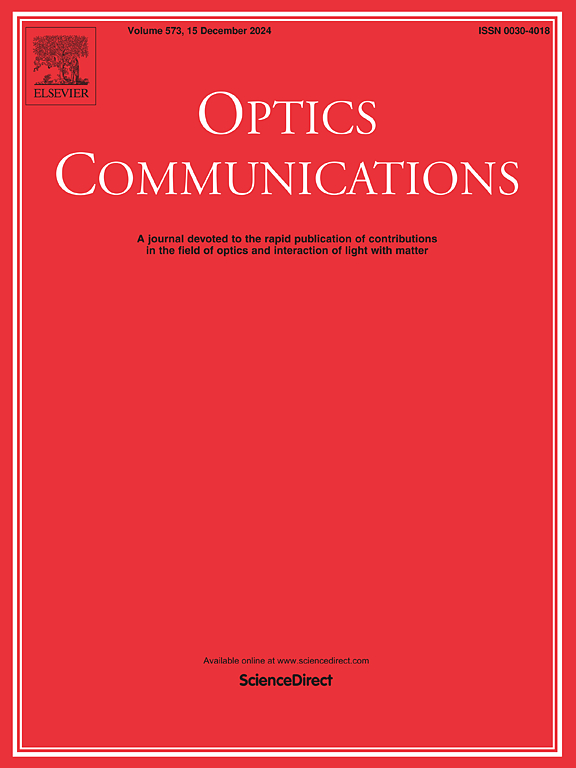Optically tunable broadband reflective metasurfaces for dynamic terahertz wave modulation
IF 2.2
3区 物理与天体物理
Q2 OPTICS
引用次数: 0
Abstract
Terahertz metasurfaces have potential applications in areas such as high-resolution imaging, wireless communications, and security detection. However, most of the previously reported metasurfaces are either static or tunable metasurfaces with limited overlap bandwidth, which hinders their application prospects. Here, a dynamically tuned terahertz metasurface was proposed based on the Pancharatnam–Berry phase principle. The insulator-to-metal phase transition of the photoconductive silicon allows the design of two independent resonators combined in a single unit structure and switched reflection phase shift under pump light illumination. Based on the multiple resonance theory, two resonators are carefully designed to achieve an overlapping bandwidth operating in the ultra-broadband range of 0.9–1.5 TH z. Consequently, a broadband vortex beam generator with switchable topological charges l = 2 and l = 1 was proposed. In addition, a broadband holographic memory also was demonstrated, allowing switching between different holograms. The propose broadband tunable metasurface not only has promising applications in vortex beam generation and holographic memory, but also provides a broad application prospect for the miniaturisation of future terahertz devices and increasing the capacity of communication systems.
求助全文
约1分钟内获得全文
求助全文
来源期刊

Optics Communications
物理-光学
CiteScore
5.10
自引率
8.30%
发文量
681
审稿时长
38 days
期刊介绍:
Optics Communications invites original and timely contributions containing new results in various fields of optics and photonics. The journal considers theoretical and experimental research in areas ranging from the fundamental properties of light to technological applications. Topics covered include classical and quantum optics, optical physics and light-matter interactions, lasers, imaging, guided-wave optics and optical information processing. Manuscripts should offer clear evidence of novelty and significance. Papers concentrating on mathematical and computational issues, with limited connection to optics, are not suitable for publication in the Journal. Similarly, small technical advances, or papers concerned only with engineering applications or issues of materials science fall outside the journal scope.
 求助内容:
求助内容: 应助结果提醒方式:
应助结果提醒方式:


